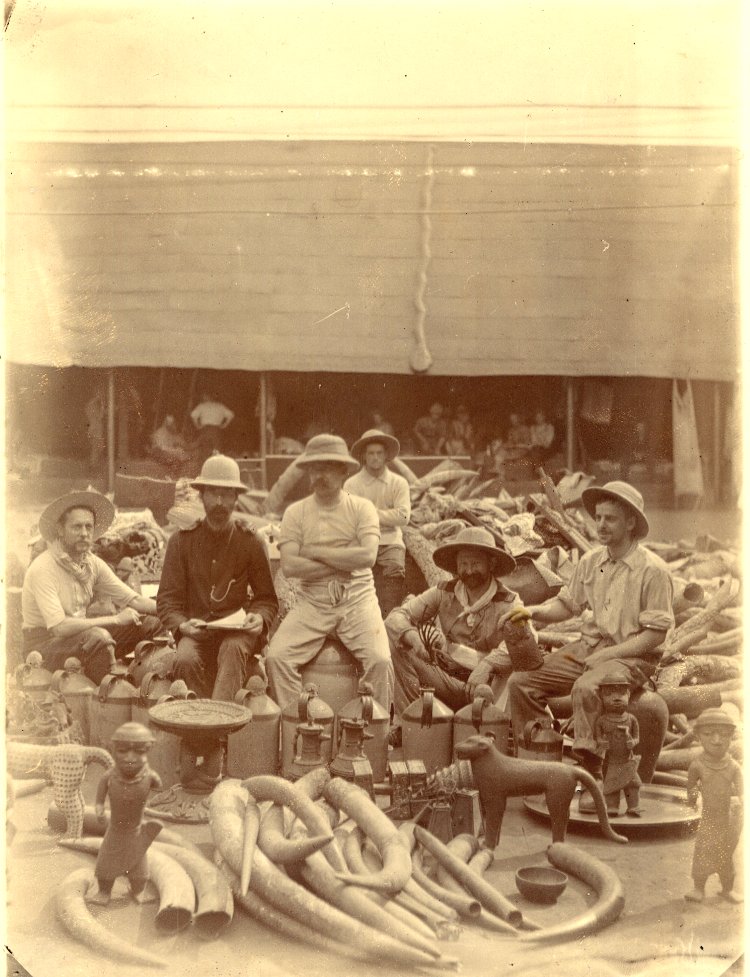Roth writes (Benin City -February 19):
“The whole place reeked of blood. Fresh blood was dripping off the figures and altars (months afterwards, when we broke up these long altars, we found that they contained human bones).”
Comments:
This statement is clearly nonsense and a downright falsehood.
We know from science that:
Q: How long does it take for blood to dry?
A: QUICK ANSWER
A study published in the International Journal of Legal Medicine reported that a blood drop on a hard surface in a typical indoor setting at 20 degrees Celsius is completely dry in 60 minutes. Increasing the temperature to 24 degrees Celsius reduces the drying time to only 30 minutes.
Accessed: https://www.reference.com/science/long-blood-dry-77b16b8edc3d35f1?qo=contentSimilarQuestions
Q: How long does it take blood to congeal?
A: Blood Coagulation typically occurs in 15 minutes, reports HowStuffWorks.
Accessed: https://www.reference.com/science/long-blood-congeal-72379e94c1ad5aa
It therefore makes no sense that days after the King and his chiefs left the city that fresh blood could have been dripping off the figures unless it was the British who shed the blood. It was also flippant to make the claim that the alters were made of human bones.
The claim of human sacrifice and the whole place reeked of blood should therefore be discounted as British soldiers' disgraceful invention to conceal their crimes of looting thousands of Benin artworks and property.
Bacon page 87 writes:
“Blood was everywhere; smeared over bronzes, ivory, and even the walls, and spoke the history of that awful city in a clearer way than writing ever could.”
No one of the British officers ever explained how in the short period that they had (the hospital ship Malacca set sail back to Britain with some of the art work on March 5 1897, that was within a week of their discovery), they were able to clean and removes smells from thousands of Benin artwork and treasures which were 'covered in and reeked of human blood' before shipping them to Britain. These artworks were already being auctioned off in London as early as May 25 1897 in the Stevens Auction Rooms, 38 King Street, London.
The questions to explore are:
What cleaning and sterilising process did they undertake? Or did they out of greed, simply put the global public and museum staff at risk of infections by selling off the human blood contaminated artworks without due care? The truth of the matter is there was no blood to clean from them. All the photographic evidence show this to be the case.
References
1) Bacon, R. H. Benin City of Blood, 1897
2) Bacon, R. Admiral Sir, Benin Expedition, A Naval Scrap-Book, First Part, 1877 – 1900: 197 – 207
3) Benin Expeditin of 1897;
accessed: https://en.wikipedia.org/wiki/Benin_Expedition_of_1897
4) Boisragon, A. The Benin Massacre,1897
5) Roth, H. L. 1903 appendix 11 cited Roth N. F. A DIARY OF A SURGEON WITH THE BENIN PUNITIVE EXPEDITION'
“The whole place reeked of blood. Fresh blood was dripping off the figures and altars (months afterwards, when we broke up these long altars, we found that they contained human bones).”
Comments:
This statement is clearly nonsense and a downright falsehood.
We know from science that:
Q: How long does it take for blood to dry?
A: QUICK ANSWER
A study published in the International Journal of Legal Medicine reported that a blood drop on a hard surface in a typical indoor setting at 20 degrees Celsius is completely dry in 60 minutes. Increasing the temperature to 24 degrees Celsius reduces the drying time to only 30 minutes.
Accessed: https://www.reference.com/science/long-blood-dry-77b16b8edc3d35f1?qo=contentSimilarQuestions
Q: How long does it take blood to congeal?
A: Blood Coagulation typically occurs in 15 minutes, reports HowStuffWorks.
Accessed: https://www.reference.com/science/long-blood-congeal-72379e94c1ad5aa
It therefore makes no sense that days after the King and his chiefs left the city that fresh blood could have been dripping off the figures unless it was the British who shed the blood. It was also flippant to make the claim that the alters were made of human bones.
The claim of human sacrifice and the whole place reeked of blood should therefore be discounted as British soldiers' disgraceful invention to conceal their crimes of looting thousands of Benin artworks and property.
Bacon page 87 writes:
“Blood was everywhere; smeared over bronzes, ivory, and even the walls, and spoke the history of that awful city in a clearer way than writing ever could.”
No one of the British officers ever explained how in the short period that they had (the hospital ship Malacca set sail back to Britain with some of the art work on March 5 1897, that was within a week of their discovery), they were able to clean and removes smells from thousands of Benin artwork and treasures which were 'covered in and reeked of human blood' before shipping them to Britain. These artworks were already being auctioned off in London as early as May 25 1897 in the Stevens Auction Rooms, 38 King Street, London.
The questions to explore are:
What cleaning and sterilising process did they undertake? Or did they out of greed, simply put the global public and museum staff at risk of infections by selling off the human blood contaminated artworks without due care? The truth of the matter is there was no blood to clean from them. All the photographic evidence show this to be the case.
References
1) Bacon, R. H. Benin City of Blood, 1897
2) Bacon, R. Admiral Sir, Benin Expedition, A Naval Scrap-Book, First Part, 1877 – 1900: 197 – 207
3) Benin Expeditin of 1897;
accessed: https://en.wikipedia.org/wiki/Benin_Expedition_of_1897
4) Boisragon, A. The Benin Massacre,1897
5) Roth, H. L. 1903 appendix 11 cited Roth N. F. A DIARY OF A SURGEON WITH THE BENIN PUNITIVE EXPEDITION'

 RSS Feed
RSS Feed
